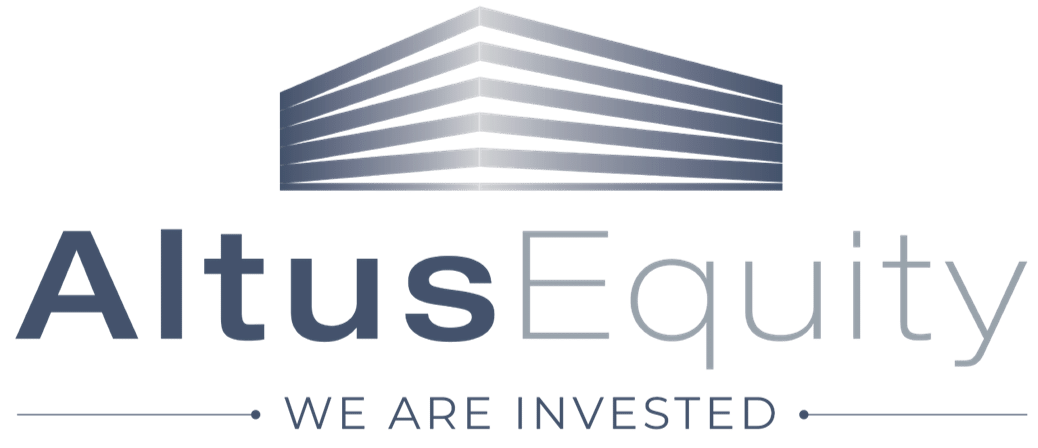In July of 2023, which is unbelievably only two years ago, I wrote about the “Genius of the And,” framing it largely as a problem-solving tool. But this same concept—where two seemingly opposing realities both can exist at once—also applies to how we understand business and life. This duality has been front and center over the past few months.
If you joined our Q2 investor call (or watched the replay), you’ll recall that Q2 was tough from an operational perspective. Industrial leasing was severely disrupted by shifting tariff structures. Multifamily margins were squeezed as expenses continued to rise while revenue growth remained soft. Properties in states most affected by federal immigration reversals felt added strain. It was a challenging environment by nearly every measure.
And yet, Q2 also brought the successful sale of an industrial property at a price well above our internal valuation completed just a few months earlier. Meanwhile, broader market stress—higher interest rates layered atop of weaker fundamentals—has pushed asset values lower. That’s painful for owners and sellers. But for disciplined investors, it opens the door for considerably stronger long-term returns. When the cost of entry is lower, returns, by simple math, are better. The current challenge is less about finding those opportunities—it’s in maintaining the right mindset to pursue them, even when the broader environment feels difficult.
Within Altus, that duality was further underscored by another Q2 event: the foreclosure of a second-position loan—the first time in Altus’ history that a brokered or owned loan converted into REO (real estate owned). The resulting outcome was a painful loss. And yet, during the same quarter, we’ve also been preparing the launch of the Altus Secured Income Fund—a vehicle specifically designed to deliver consistent, low-volatility returns by focusing exclusively on senior (first position) loans, with minimal back-end leverage and conservative underwriting. In this case, boring is a good thing.
In other words: the pain of one higher risk investment gone bad, helped solidify the value of another much lower risk investment structure. One reminded us why we’re launching the other. Unlike the “boring” Secured Income Fund, the story of that second-position loan was anything but boring.
The Loan Story
In mid-2023, we funded an $800,000 second-position loan behind a $2.2 million first on a California residential property appraised at $4.5 million.
The leverage ratio—just over 65%—was within a range considered acceptable for private lenders. The borrower made payments reliably for six months—until, suddenly, they didn’t. To make matters worse, during that same six months, the borrower appeared in local news for behavior that alienated the surrounding community, further complicating any exit strategy. Once the loan went into default, efforts to cooperate with the borrower to sell the property outside of foreclosure went nowhere. Months into the foreclosure process (as mandated under California law), the borrower filed for bankruptcy the day before the scheduled foreclosure auction, delaying resolution by another six months. By the time we finally took possession of the property, 18 months had passed without a single payment. The home sat vacant and deteriorating. Market conditions had also declined significantly. The property, originally valued at $4.5 million, was listed at $3.5 million and ultimately sold for $2.4 million—resulting in a significant loss.
Lessons Reiterated
The experience reinforced several critical truths:
- First and second position loans are fundamentally different investments. They each carry unique risk and return profiles and should never be treated as interchangeable.
- Carrying costs matter. In junior positions, lenders must keep the senior current or accept their position eroding by the increasing 1st loan balance due to the unpaid interest. On income-producing properties, this can be mitigated by including an assignment of rents document in the loan document package. On non-income properties, the costs directly erode the junior lender’s net recovery if there ends up being shortage of equity.
- California foreclosure timelines are brutal. Long foreclosure timelines and borrower-friendly regulations magnify risks, particularly in declining markets. Had the foreclosure discussed above been completed quickly, we might have avoided losses altogether.
- Bankruptcy is a major risk. It undermines the speed and simplicity that make private lending attractive. Protections like springing guarantees may help as deterrents, but they are not a perfect solution.
- Borrower character matters. Financials and appraisals only tell part of the story. A borrower’s willingness (or unwillingness) to act in good faith can dramatically change outcomes.
These aren’t new lessons—but they were reinforced in a very real way.
Our Response Going Forward
Given this experience, and in light of recent changes to California foreclosure laws, we’re making several adjustments to our broader debt investment approach:
- We are highly unlikely to fund junior loans on California 1–4 unit residential properties, except in very conservative scenarios.
- California loans, when considered, must command higher rates to account for added risks.
- Springing guarantees are now standard practice in our loan documentation.
- For second position residential loans, 3rd party servicing has become a must.
- We are increasing due diligence on borrower principals—going beyond credit reports to include deeper background checks (internet stalking) and discreet industry references when possible.
Where This Leaves Us—and Where We’re Going
Private credit has become one of the hottest categories in institutional investing. But not all private credit or private credit structures are created equal. Some of it is complex, speculative, or poorly underwritten. Unlike the Secured Income Fund and very much like the loan discussed above, some private credit positions contain substantial amount of risk. Our own experience this quarter served as a vivid reminder of why we’re building the Altus Secured Income Fund the way we are.
The fund focuses exclusively on first-position loans—the top of the capital stack—secured by real estate we understand. It avoids the layered risk inherent in junior debt. It uses back-end leverage sparingly, and only for timing purposes (to smooth out loan fundings and investor redemptions). The structure is consistent, transparent, and boring. And after Q2, we’re more convinced than ever that “boring” is a virtue. If you want excitement, there are plenty of other places and ways to invest.
Two seemingly opposing things can both be true. We can acknowledge a bad investment outcome in a debt investment, while also being highly confident in the virtues and risk profile of investing in senior debt. The genius of the “and” strikes again.
Happy Investing,


